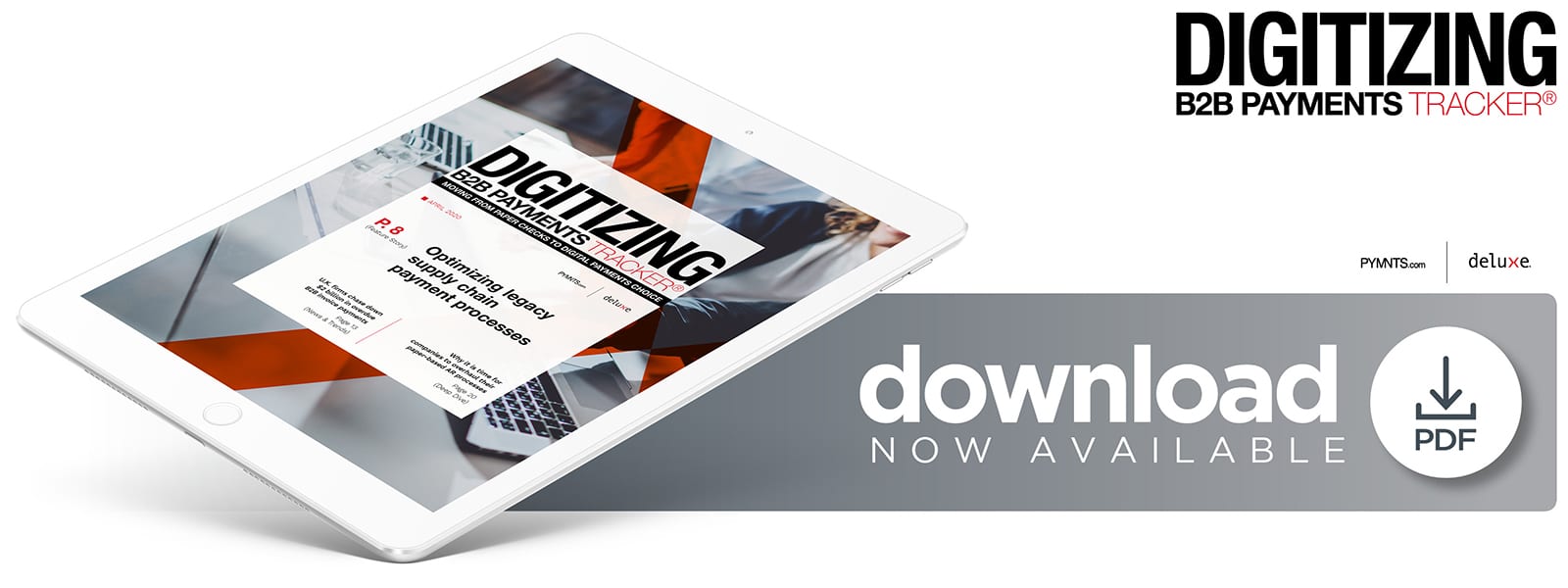How B2B Trust Is Keeping Checks, Paper Invoices Humming Along

Businesses shipping age-restricted goods like alcohol to other vendors often bump into quirky state regulations, like rules that make buyers pay immediately upon delivery – making digital payments challenging. In our latest Digitizing B2B Payments Tracker, Ernie Olsen, vice president of growth and engagement for liquor retailer Macadoodles, discusses why paper checks and invoices still meet liquor stores’ supply-chain needs — and what it would take to digitize them.
Numerous digital technologies have entered the business realm during the past few years, shifting how quickly companies expect their suppliers to fulfill their orders.
Firms are now searching for speed as well as seeking processes that can satisfy suppliers and keep supply chains moving in familiar and safe ways.
Simplifying supply chains is important, but businesses can struggle to take the digital leap — often because they lack the capital or the necessary knowledge. Companies often also feel that tools like eInvoicing do not offer clear advantages over paper checks, Ernie Olsen, vice president of growth and engagement for liquor retailer Macadoodles, told PYMNTS in a recent interview. Checks and paper invoices have long been integrated into supply chains from start to finish — and for well-established reasons, he said.
“I do not think there is anything on the retailer side that is going to prompt a change [for payments] because that would be the tail wagging the dog,” Olsen explained. “The suppliers are all happy getting their money in 30 days. That is the way they have always done it, and what is the advantage to them to change it? If [suppliers] can speed up [their cash flows], there is some benefit to that, but the cost of capital is all built into their prices. So, if they speed it up, it would be the equivalent of a price increase for everybody else.”
Checks will continue being fixtures in B2B payments so long as they work well for both retailers and suppliers, yet businesses are also examining how digital technologies could be used alongside them to increase supply chain efficiency.
Checks Allow for Control, Satisfaction
Many companies see no need to invest in building new B2B payment infrastructures if suppliers are happy with checks. Macadoodles operates several large-scale locations in Missouri that each carry approximately 4,000 wine and 600 beer brands. It has relied on checks to pay its suppliers on a monthly cycle since it opened in 1997, and many suppliers still enter the stores to pick their checks up in person. This familiarity fosters a sense of trust and control, Olsen added.
“It feels like I am in control if I am writing a check,” he explained. “Whether [I am] handing it to the addressee or handing it to someone to put into an envelope to mail, that feels like control. I sense a fairly significant hesitancy [from business owners] about using technology in many areas … just because it has got a reputation of being somewhat unreliable and not affording one the same control.”
This trust factor is causing firms to take slower approaches to B2B payment innovations, as these new tools are still seen as unfamiliar and untested for accounts receivable (AR) and accounts payable (AP) processes. This leads some to test out such technologies more cautiously than they would consumer-facing digital tools, including payment solutions. Innovating back-end processes means taking a look at the exhaustive business ecosystem behind customer transactions, and any mistakes made are much costlier. Implementing digital payments can lead to money being sent out for incomplete invoices, for example, or cause authentication-related errors that businesses cannot afford. They must therefore examine new B2B payment technologies with more caution.
“On the [point-of-sale] side, the technology is better,” Olsen said. “Some of our stores have apps that are connected to the POS and the inventory ledger so [customers] can order something from wherever [they] are and be 100 percent sure that it is there. But, on the business side … whatever [digital technology is available], it is not here [in our supply chain].”
The business side is still completely reliant on checks and paper documents rather than digital technologies, he confirmed, mainly because these paper-based tools still fulfill their intended functions. The goal is to ensure the supply chain hums along as seamlessly as possible, which means companies must examine how digital tools will impact every facet of their operations, not just their relationships with customers.
Ongoing B2B Technology Challenges
Speed is important in today’s B2B ecosystem, but digital tools must be examined to determine every way they will affect operations. Invoicing is a prime example of that type of challenge, as it is still a highly manual process for many companies. Moving away from paper-based invoicing to digital solutions is difficult because many businesses are not set up to process digital invoices at the point of delivery. These solutions need to be able to show companies that they can accomplish the same thing as the paper invoices they have been using for decades.
“We can only change [from paper invoices] if we get to the point where we can be certain that what the invoice says is being delivered is actually being delivered,” Olsen said. “Every single delivery, someone checks it off against the invoice. Every bottle, every case … nothing is taken for granted because [when] mistakes are made, [they are] really, really costly. It is like letting people steal from your store.”
Meticulous invoicing is particularly challenging when it involves age-restricted goods, especially in the U.S., as different states have different rules regarding how payments can work for these products. Arkansas’ laws mandate that alcohol shipments be paid for upon delivery, for example. eInvoicing is thus problematic because it would accelerate payments, and such speed is not necessarily helpful for businesses that still need to check over shipments, Olsen said. Slow innovation in this area can be frustrating for both sides of the supply chain.
“I think we should be way beyond where we are,” he explained. “I would like to be able to scan a barcode on the supplier’s phone and then [it] brings up on my screen the invoice that they are delivering. [We would] check [the delivery] off against that and then, once that is confirmed … [the technology] just schedules the payment and it goes out on whatever day is the agreed day for payments to that supplier.”
Digital technologies could solve some states’ regulatory issues, Olsen said, but businesses still appear to be approaching them with caution. He said he expects the B2B supply chain to become more open to these options in time, however, especially as more businesses have positive experiences with them. A desire for simple, seamless supply chains will likely remain for years to come, and B2B solutions providers will need to keep this in mind when designing digital products.

